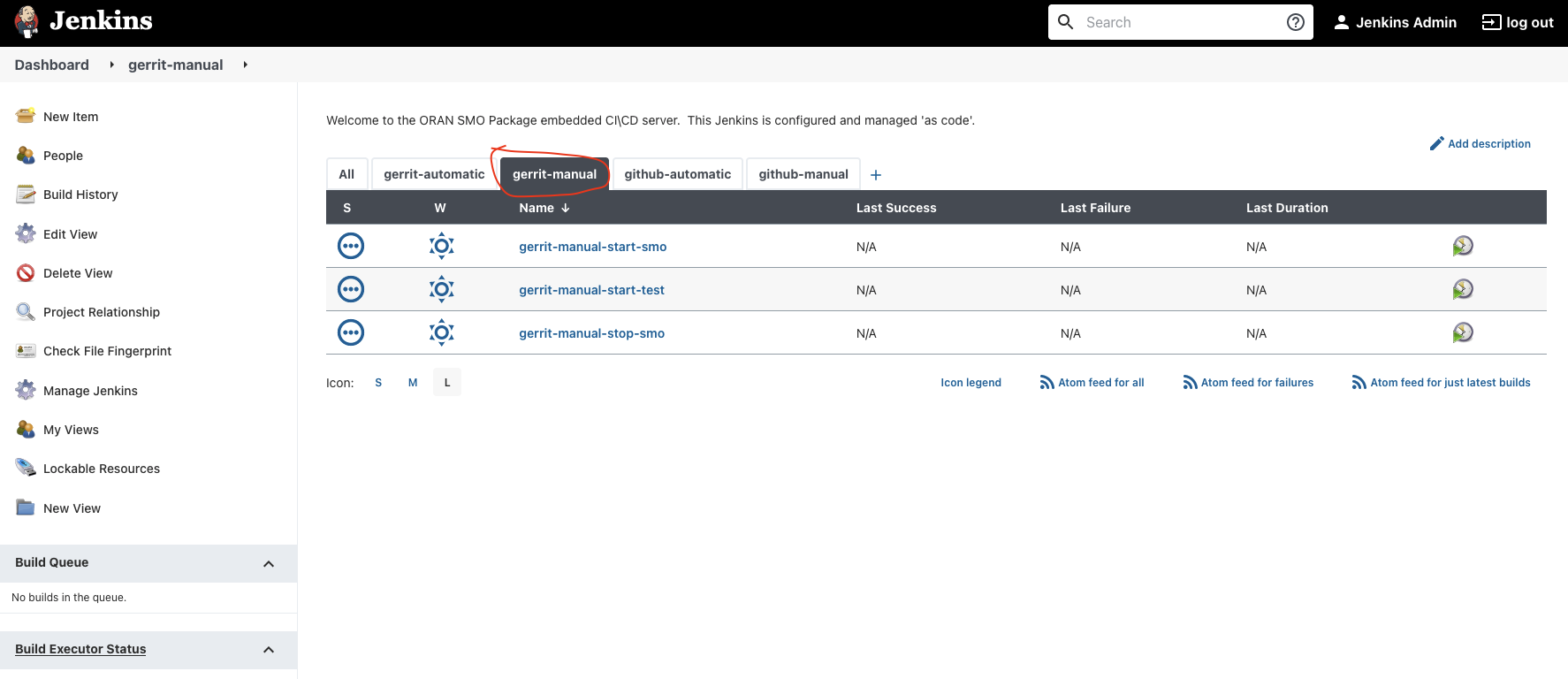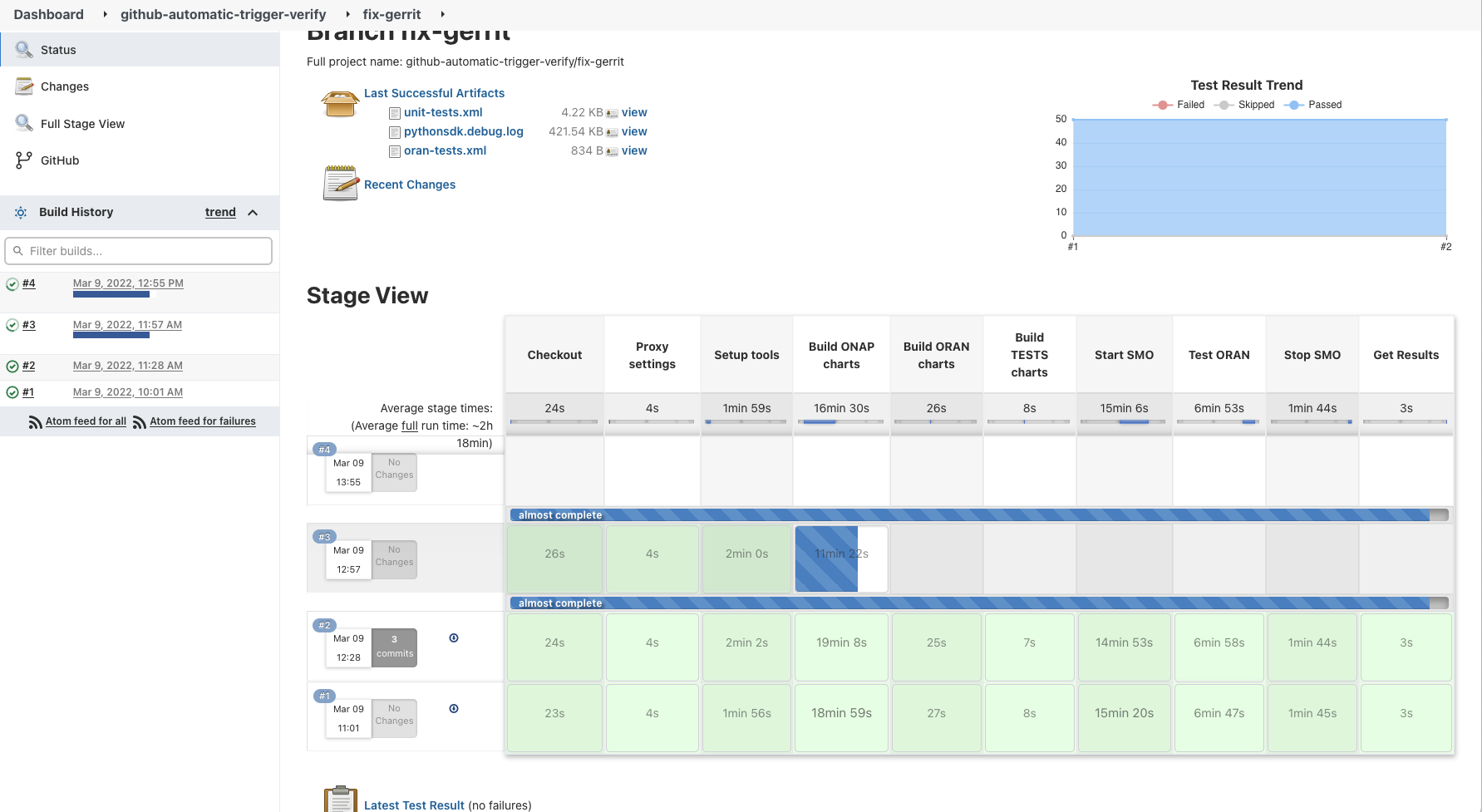...
- Connect to a remote repository (sample for Github and Gerrit provided)
- Auto discover branches and open pull requests / Gerrit reviews
- Download changes from the repository, build deploy and tests
- It is also possible to manually trigger Start / Stop / Test the SMO package (Job with the Manual keyword in the name)
It is possible to login to the Jenkins instance (to see/modify the configuration) by using the default login/password (test/test) - this can be overriden in overrides files (see above at installation part)
2) Running the tests
To execute the tests, there are 2 options :
1) Auto Scheduled checks
configure the access to the github/gerrit repositories and let the system scan for available branches, you can see what has been retrieved by clicking on the "-verify" jobs.
Once the access to the repositories is configured, new jobs will be automatically created to validate available branches, they can be triggered by launching the jobs
OR
Jobs are going to be created automatically on Gerrit reviews(gerrit) / Pull Requests (github) and will check for new changes automatically, or can be launched manually
see jobs below
2) Manual startup
A set of jobs is automatically created to allow for a manual startup (regardless of branches or current activity on the repository), they can be accessed from the main dashboard or using the tabbed view
In order to execute the manual jobs, you need to be logged in (test user or the user defined in the override files at installation
when running a manual job, you can provide the branch which will be pulled from the repository and the location of the override files (Flavor) which defines which components and tests will be run
Once the tests are executed, you can follow the pipeline execution through the Jenkins UI
Logs/results can be accessed through the workspace available in the job execution UI, execution history, trends and step details can also be accessed through Jenkins interface
3) Hooking with repositories
...


